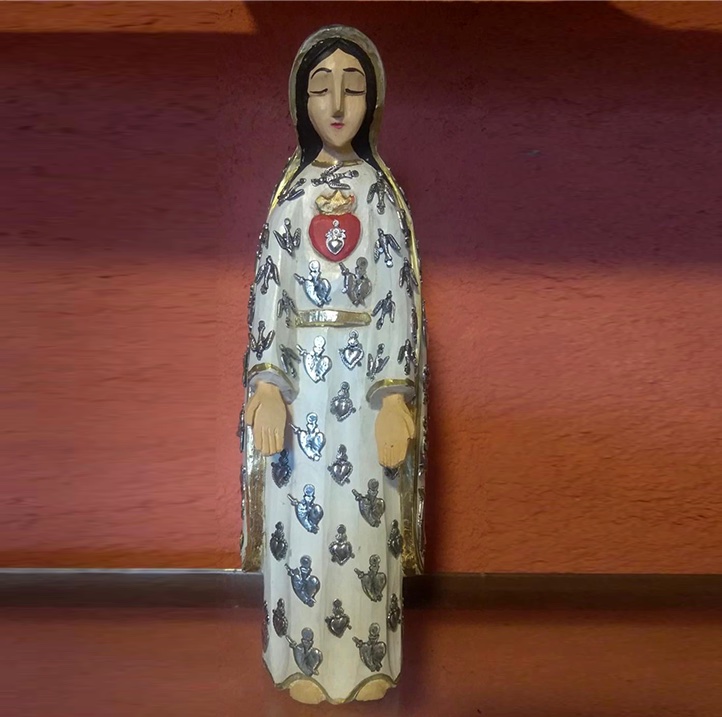
Don’t get so close to the saint that it will burn you, but neither too far that he won’t see you
In Spanish the word Milagritos means “Little Miracles” and Exvotos means “Offerings” which are small pieces of metal figures made of silver, gold, tin or even cheaper alloys like zamak. There are plenty of forms and sizes and they can be plain or three-dimensional. They are part of an ancient tradition to bring healing or as a devotional offering to request a specific need or to demonstrate gratitude for an answered prayer. They are used to help focus the attention into a specific sickness that wants to be healed or as a charm for protection and good fortune.
Milagros can be presented as a physical representation of a need or as a request to a saint or can be placed on a sanctuary or altar as an offering.
As an example of this, if a farmer wanted to have an abundant harvest, he would given an offering of small pieces of carved wood or wax with the shape of cereals and grains. Milagros can also have different shapes of the body and they are used as a prayer to fulfill a desire. The shape of a heart means a prayer for love and romance, the shape of an eye is a prayer for improved eye sight, an ear for hearing and many other shapes like legs, arms, cows, chicken, praying men or women might represent children, relatives or even saints.
The use of Milagros goes back to the medieval times in Europe and they continue to be a common practice within the religious context nowadays in Mexico and throughout Latin America.
Milagros can be often found as a component in collars, necklaces, pendants and other jewellery which we proudly incorporated to our product line.

In Spanish the word Milagritos means “Little Miracles” and Exvotos means “Offerings” which are small pieces of metal figures made of silver, gold, tin or even cheaper alloys like zamak. There are plenty of forms and sizes and they can be plain or three-dimensional. They are part of an ancient tradition to bring healing or as a devotional offering to request a specific need or to demonstrate gratitude for an answered prayer. They are used to help focus the attention into a specific sickness that wants to be healed or as a charm for protection and good fortune.
Milagros can be presented as a physical representation of a need or as a request to a saint or can be placed on a sanctuary or altar as an offering.
As an example of this, if a farmer wanted to have an abundant harvest, he would given an offering of small pieces of carved wood or wax with the shape of cereals and grains. Milagros can also have different shapes of the body and they are used as a prayer to fulfill a desire. The shape of a heart means a prayer for love and romance, the shape of an eye is a prayer for improved eye sight, an ear for hearing and many other shapes like legs, arms, cows, chicken, praying men or women might represent children, relatives or even saints.
The use of Milagros goes back to the medieval times in Europe and they continue to be a common practice within the religious context nowadays in Mexico and throughout Latin America.
Milagros can be often found as a component in collars, necklaces, pendants and other jewellery which we proudly incorporated to our product line.
Don’t get so close to the saint that it will burn you but, neither too far that he won’t see you
